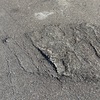Descrizione
Toxic blue-green algae occuring again in the southeast lobe of Harbor Isle Lake. The green-paint-like scum is more than 50 feet out into the lake area. Rotting pungent odors detectable from a distance that grow much stronger as you approach the water. (photo ~9AM, today)
This has been occuring consistently in this area, and other lake areas, (as others have noted online) for months. We are now into a 4th calander year of dealing with these toxic cyanobacteria blooms (2018 - 2021 present).
It's all fixed, according to the City and HOA. There's been no updates since September 2020. What's fixed, exactly?
What is the evidence of best efforts by those in-charge?
The City hasn't done any of the following, and has been sent multiple requests from residents, regarding these suggestions supported by science and engineering analysis:
• Adjusting and improving the efficiency of the micro-bubble aeration system installed in June 2020 -- by means of analyzing nutrient run-off input loading, sediment leeching, BGA build-up locations, lake morphology, and other factors alongside info previously mentioned/ emailed to City personnel.
• Keeping the properly designed micro-bubble aeration system as a permanent running solution to mitigate future lake events and to keep the lake healthier. Just as nearby Renaissance Neighborhood has had since 2016, which the City approved/helped fund.
• Removing the conflicting, higher cost, and unproven nano-bubble system and replacing it with more micro-bubble diffusor heads, if needed.
• Adding beneficial bacteria as a treatment to the micro-bubble aeration to aid in the micro-bubble system's effectiveness.
• Investigating / testing the lake's sediment & fill material for nutrient loading and leaching into the water body.
• Dredging the lake's sediment & fill material, if a properly designed micro-bubble aeration system is still not at its most effective due to possible extreme sediment leaching from the City approved fill project in 2001.
• In addition to the U.S. mailed letters, a creation of public web-page that allows City statements, data, and any other pertinent information to be posted about Harbor Isle Lake and its situational analysis. So, any interested party can better understand what has been going on or what is being planned.
• Clearing out invasive cattails to improve lake access, reduce nutrient load, and to reduce the likelihood of toxic blue-green algae being trapped and its toxic dust residue from becoming airborne -- especially at the city's easement and access points, like at the public neighborhood entrance.
How long does this have to go on without any future efforts to help stop this and improve the entire lake?








1 Commento
Customer Support (Ufficialità verificata)
This issue has been marked as a duplicate of issue 8954408.
If you are already receiving notifications regarding this issue,
you will now receive updates regarding issue 8954408.